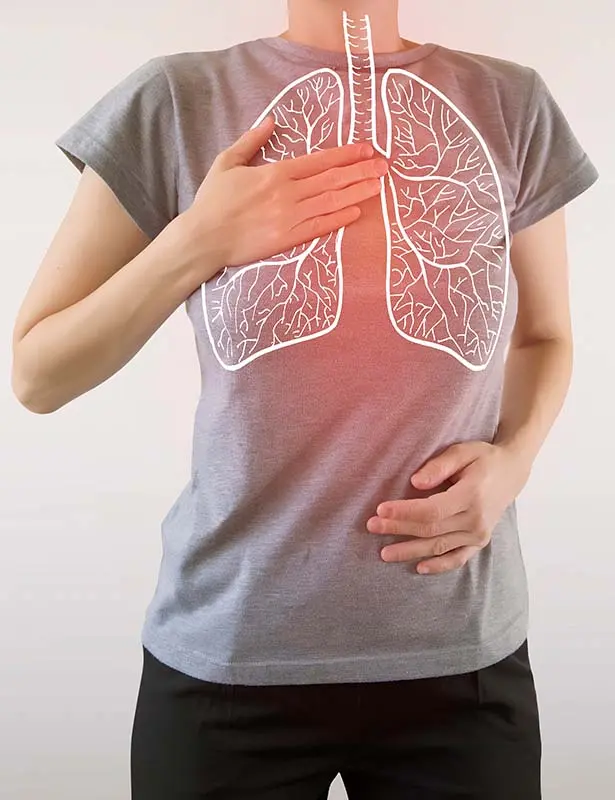
Heart and lung diseases are among the leading causes of mortality worldwide, claiming millions of lives each year. According to the World Health Organization, ischemic heart disease, stroke, and COPD accounted for 16%, 11%, and 6% of all global deaths in 2019, respectively. Interestingly, people who develop lung diseases like COPD, lung fibrosis, and asthma may face a higher-than-average risk of cardiovascular diseases.
A study with 1200 participants found that people with late-onset asthma had a 57% greater chance of suffering a heart-related issue than those without asthma. Similarly, those with heart issues have an increased risk of lung diseases.
Cardiovascular diseases encompass a range of conditions that affect the heart and blood vessels. These conditions can have serious and sometimes life-threatening consequences and include:
• Coronary artery disease, which involves the narrowing of the blood vessels supplying the heart
• Heart failure, where the heart cannot effectively pump blood
• Arrhythmias, which are irregular heart rhythms
• Heart valve problems
Risk factors for heart disease include high blood pressure, high cholesterol, smoking, obesity, diabetes, and a family history of heart disease.
Respiratory diseases are a group of conditions that affect the respiratory system, primarily the lungs and airways. They can range from mild, short-term illnesses like the common cold to chronic and severe conditions such as:
• Chronic obstructive pulmonary disease (COPD), is a progressive lung condition that causes breathing difficulties due to narrowed airways and damaged lung tissue.
• Asthma is a chronic respiratory condition characterized by airway inflammation and recurrent episodes of wheezing, coughing, and shortness of breath.
• Lung cancer, a malignant tumor that originates in the lungs, is often associated with a history of smoking
• Pulmonary fibrosis, where lung tissue becomes thickened and scarred, making it difficult for the lungs to function properly
Disease origins include smoking, exposure to environmental pollutants, genetic predisposition, and infections.

The heart and lungs work as a team to ensure the body receives oxygen and nutrients while removing waste products. This cooperation is vital for sustaining life. Any disruption in either system can have significant consequences for the other.
The heart is a muscular pump that circulates blood throughout the body. When you breathe, your lungs take in oxygen from the air and pass it into the blood. The heart then pumps this oxygen-rich blood to your body's cells. As your cells use the oxygen for energy, they produce waste in the form of carbon dioxide. This carbon dioxide is carried by the blood back to the heart, which then sends it to the lungs.
In the lungs, oxygen from the air gets into the blood, and the carbon dioxide is expelled when you breathe out. This continuous cycle of the heart and lungs working together keeps your body supplied with oxygen and helps get rid of waste, keeping you healthy and alive. It takes about 16 seconds for blood to travel around the body. And when everything works as it should, you’re considered in good cardiopulmonary health.
The cardiovascular and respiratory systems are closely intertwined, and their health is interdependent. When there are problems in one system, it can lead to complications or failures in the other.
For instance, lung issues can lead to heart problems and vice versa. Conditions like chronic obstructive pulmonary disease (COPD) or severe asthma can cause chronic inflammation and reduced lung function. This strains the heart, making it work harder to pump blood and oxygen to the rest of the body. Over time, this added strain can lead to heart conditions, including high blood pressure, heart failure, and even heart attacks.
On the other hand, heart problems can also lead to lung issues. Heart failure, for example, can result in fluid accumulating in the lungs, making it difficult to breathe. The heart's compromised ability to pump effectively can affect the delivery of oxygen to the body, further complicating matters. These reciprocal relationships underscore the importance of addressing and managing both systems when health issues arise to ensure overall well-being.

Cardiopulmonary problems, which affect both the heart and lungs, can manifest with a range of symptoms. These symptoms often overlap and may include:
• Shortness of breath (Dyspnea)
• Chest pain or discomfort
• Cough
• Wheezing
• Fatigue
• Swelling (edema)
• Rapid or irregular heartbeat (Arrhythmia)
• Cyanosis
• Sputum production
• Dizziness or fainting
Early detection of cardiopulmonary problems is paramount for several reasons.
• It can save lives. Many heart and lung conditions, if diagnosed in their early stages, can be managed more effectively, slowing down their progression and preventing severe complications. Timely intervention can also lead to improved quality of life for individuals living with these conditions.
• It reduces healthcare costs by preventing the need for more extensive and costly treatments that become necessary when conditions have advanced. It also eases the burden on patients and their families, who may experience less stress and anxiety when potential problems are identified and addressed promptly.
• It empowers individuals to take control of their health through lifestyle changes, medication, or other interventions. Routine check-ups and awareness of risk factors can help identify issues before they become critical.
Science 37 is at the forefront of medical research, conducting extensive studies to unravel the mysteries of heart and lung diseases. Their dedication to clinical trials and patient participation has helped companies and individuals gain valuable insights into pulmonary function testing, sites for cardiovascular trial, and so on.
In one trial, Science 37 found that trials can be done in patient’s homes, extending access to clinical research for patients with respiratory disorders. In another trial, Science 37 partnered with a sponsor to adopt a decentralized clinical trial arm that provides a virtual option for patients. This trial helped the sponsor achieve their goal of expansive patient reach while analyzing the effectiveness of the investigational drug.
The future of research in the field of cardiopulmonary health holds great promise. Advances in medical science, genomics, and personalized medicine are opening new avenues for more precise diagnostics and treatments. Researchers are exploring innovative therapies, including regenerative medicine, gene editing, and immunotherapies, which have the potential to transform the way we manage heart and lung diseases.
Moreover, the integration of digital and wearable technology and artificial intelligence is enhancing early detection and remote monitoring. These treatment advancements allow healthcare providers to track patients' conditions more closely and make timely interventions.
Patient empowerment and advocacy are also driving progress, as individuals become more informed and proactive in managing their health. They participate in research studies, share their recovery stories and experiences, and contribute to the development of patient-centered approaches to care.


